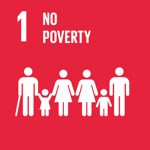Organic bananas: combating the red rust
 Costa Rica
Costa Rica
 Dominican Republic
Dominican Republic
 Ecuador
Ecuador
 Holland
Holland
 Peru
Peru
Executive Summary
Organic banana production is a key activity for more than 10,000 families, who cultivate more than 30,000 hectares of this crop in Ecuador, Peru and the Dominican Republic. The crop generates weekly income, employs family and local labor, and has relatively low maintenance costs. However, growers are under pressure from pest outbreaks, costly supplies, certification requirements, and extreme weather events. Between 2011-2013, organic banana producers in Ecuador and Peru suffered losses of 20-30% due to the red rust thrips (Chaetanaphothrips signipennis), which creates red spots in the peels, a cosmetic damage, but with zero tolerance for export. Soil degradation and mismanagement also negatively affect production potential. The project developed good practices and innovations in agroecological intensification to reduce the damage of red rust thríps, improve soil health, and achieve the technological transformation of small producers of organic bananas for export. Local partnerships were developed in territorial and international platforms to promote good practices and decrease the sector's vulnerability to phytosanitary risks, climate change, and improve productivity. The work was implemented by a platform constituted by the national agricultural research organizations of the three countries, with the support of an international organization, and the participation of multiple partners from the public and private sectors.
The technological solution
The use of banana bunch sleeving, protects the fruits from the infestation of thrips that cause the red rust on the peel, substantially reducing the cosmetic damage, but which is cause of rejection of the product for export.
The method developed for the evaluation of losses has made it possible to monitor damage caused by the thrips as well as losses from other causes. This has enabled the identification of the various causes of damage, and the application of a set of measures to mitigate them.
The use of various compound applications targeting the fruit and the bud at the time of sheathing, in conjunction with the implementation of other practices reduce fruit damage by an additional 2-8%.
Fertilization and the use of nutrients and organic matter were managed. This was done through the strategic relocation of banana residues. Two practices were proposed: 1) use the more than 14,000 leaves removed from the plant each year per hectare to reduce soil exposure and 2) pile the harvested buds and stems (> 2000 / ha / year) at 75 cm in front of the succession plant. With these practices, better soil health is achieved.
Results
The project developed two technologies: 1. An improved management based on bunch sleeving that demonstrated good potential to minimize damage from red rust thrips to 0-5% compared to losses of more than 40% without sleeving. 2. A method for evaluating losses that not only allows monitoring of damage caused by the thrips, but also the evaluation of losses from other causes. These losses, or production not suitable for export, varied between 15-25% in the three countries. A reduction of 50% of the total losses could represent 200 boxes of bananas per hectare per year and an additional income of 200 to 400 dollars per hectare.
The improvement in soil health was made through the management of fertilizers and organic waste. Adjustment in fertilizer applications to cover N, P, and K contained in harvested bunches was also an important element. This management increases production by 200-400 boxes / ha / year, which would be equivalent to an additional income of $ 200-800 per ha / year.
The multi-country team made 35 presentations in scientific forums and completed 12 posters summarizing the research results of the project. In the first years of the project, 330 technicians were trained in the management of red rust and another 85 technicians in soil health, both in the classroom and in the field. The platforms in each country also organized project closing events for authorities, leaders of producer organizations, professors and researchers, involving more than 300 people. Field days were also organized in the soil health plots. In the 12 field days, approximately 150 participants were trained.
Beneficiaries
t is estimated that more than 500 organic banana producers, professionals and technicians have directly benefited through their participation in project activities.
It is estimated that up to 10,000 organic banana producers and thousands of technicians and professionals could benefit based on their access to information generated by the project.
Sustainable Development Goals


Participating Organizations
Executor
- Bioversity International - Costa Rica
Co-executor
- Asociación de Bananos Ecológicos de la Línea Noroeste – Banelino (BANELINO) - República Dominicana
- COORDOM - República Dominicana
- Instituto Dominicano de Investigaciones Agropecuarias y Forestales (IDIAF) - República Dominicana
- Instituto Nacional de Innovación Agraria (INIA) - Perú
- Instituto Nacional de Investigaciones Agropecuarias (INIAP) - Ecuador
- Wageningen University & Research (WUR) - Holanda
- SWISS CONTACT - Perú
- Technical Assistance for Sustainable Trade & Environment (TASTE) - Holanda




